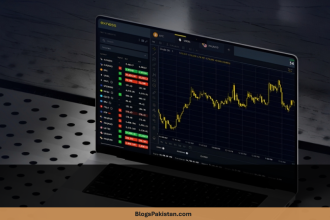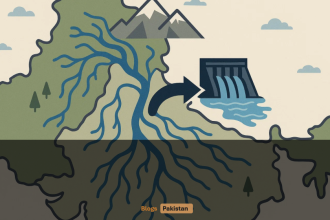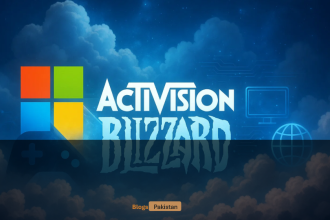Canada has long been known for maple syrup, politeness, and snow-covered charm—not exactly for military might. But things are changing fast. Prime Minister Mark Carney just made a major announcement that has everyone from Ottawa to Oslo perking up: Canada is finally stepping up to meet NATO’s 2% defence spending target—and not by 2030, but by next year.
Yes, you read that right. From a country where even the moose seem diplomatic, Canada is shifting gears. Let’s break down what this means for NATO, global defence, and why South Asia should care.
The 2% Club: Why It Matters
NATO—the North Atlantic Treaty Organization—is basically the global security version of a neighbourhood watch, only with tanks and treaties. For years, member countries have agreed to spend at least 2% of their GDP on defence.
Spoiler alert: Canada has been missing that goal for decades. In 2024, its defence budget stood at just 1.4% of GDP. That’s like promising your gym trainer you’ll do 10 pushups and quitting at 6. Politely, of course.
But Carney’s new plan? It’s a game changer.
What’s Behind the Sudden Push?
The world isn’t exactly on “peace and chill” mode right now. Carney, in his speech at the University of Toronto, said the globe is at a “hinge moment”—think Cold War vibes, but with more cyber threats and fewer fax machines.
Here’s what’s fueling this urgency:
- Aggressive moves by Russia and China
- Threats to Arctic security
- Cyberattacks and terrorism
- America stepping back from being the world’s bodyguard
Canada has been heavily reliant on the United States for defence. But Carney made it clear: it’s time for Canada to stop freeloading on Uncle Sam’s defence tab.
Breaking Down the New Plan: The Four Pillars
Carney isn’t just throwing cash at the military like it’s Black Friday. The strategy has four well-defined goals:
1. Invest in Soldiers and Gear
Canada’s current defence setup sounds like the plot of a sad military documentary. Only one out of four submarines is seaworthy, and less than half of its land vehicles are in working order.
Expect new:
- Submarines
- Fighter jets
- Drones
- Ships
- Artillery
This isn’t just shopping—it’s survival.
2. Expand Military Capabilities
It’s not just about fixing what’s broken. Canada wants to build new strength. More boots on the ground, more eyes in the skies, and probably more Arctic camo.
3. Strengthen the Domestic Defence Industry
For a long time, Canada has relied on imports. The new plan includes the creation of a Defence Procurement Agency to speed up acquisition and promote local defence manufacturing. Think of it as Make in Canada—but with tanks.
4. Diversify Defence Partnerships
No more just clinging to Uncle Sam’s arm. Canada wants new friends, new deals, and maybe even a few new bases. This is especially important in a world where alliances shift faster than cricket team rankings.
How Much Is It All Going to Cost?
Carney’s government has pledged C$9.3 billion in immediate spending—yes, billion with a “B.” That’s $6.5 billion USD, and much of it is “spendable right now,” meaning soldiers and factories are going to feel it this fiscal year.
Some of the money will go toward:
- Monitoring the Arctic
- Deep sea surveillance
- Personnel salaries
- Speeding up procurement
It’s not all rosy, though. A 2024 parliamentary report called out Canada’s sluggish defence buying process—blaming it on bureaucracy, delays, and political drama. Carney is hoping the new procurement agency fixes that.
Why India and Pakistan Should Pay Attention
You might wonder—why does it matter to us?
Here’s why:
1. Canada’s Diaspora Link
Both India and Pakistan have large diasporas in Canada. Any shift in Canada’s military and foreign policy can impact global alliances, trade, and immigration policies.
2. Arctic Interests
With global warming (sadly) melting Arctic ice, new trade routes and resource claims are becoming real. Countries like India, who are investing in polar research, and Pakistan, which is eyeing new trade opportunities, will be watching how NATO and Canada handle Arctic security.
3. New Defence Markets
Canada boosting its domestic military production opens up potential collaboration opportunities. Defence companies in India (like HAL or DRDO) or Pakistan (like PAC Kamra) may see this as a business opening.
4. NATO Dynamics
If Canada pulls this off, it could nudge other NATO stragglers to follow suit. That affects global military balance, especially with China rising and Russia acting out.
The Opposition’s View: A Little Shade Never Hurt
Conservative leader Pierre Poilievre supports increased defence spending but took a jab at the Liberals. According to him, Carney’s party has done too little for too long. He said that after 10 years in power, they’re now scrambling to act only because the pressure is on.
Politics as usual? Definitely. But he’s not wrong about one thing: Canada is playing catch-up.
What’s Next?
The timing of this announcement is no accident. The G7 Summit is around the corner (June 15-17), and you can bet Carney wants Canada to show up looking like a serious player, not a bystander.
Also on the horizon:
- NATO Summit where the 3.5% and 5% GDP defence spending goals are being debated.
- Rutte’s push for a 400% increase in missile defence.
- Ongoing tensions in Europe, the Middle East, and the Indo-Pacific.
Canada’s commitment could help shore up NATO unity—and pressure others to follow through.
Final Thoughts: From Peacekeeper to Power Player?
Canada has long enjoyed its role as the friendly peacekeeper—more Gandalf than gladiator. But the world’s turning rough, and it looks like Canada’s dusting off its armour (and maybe a snow camo suit).
Whether this is a one-time sprint or the start of a new defence doctrine remains to be seen. But one thing’s clear: the country is no longer content sitting at the kids’ table in global security talks.










